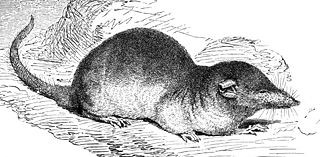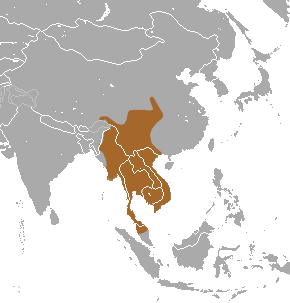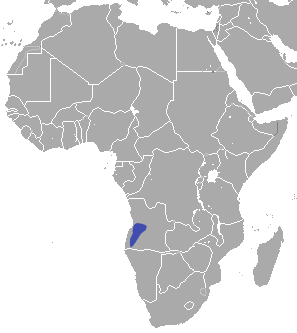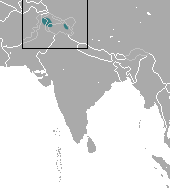
The white-toothed shrews or Crocidurinae are one of three subfamilies of the shrew family Soricidae.

The lesser white-toothed shrew is a tiny shrew with a widespread distribution in Africa, Asia and Europe. Its preferred habitat is scrub and gardens and it feeds on insects, arachnids, worms, gastropods, newts and small rodents, though its diet usually varies according to the biotope where it lives. The closely related Asian lesser white-toothed shrew was once included in this species, but is now considered to be a separate species.

The greater white-toothed shrew is a small insectivorous mammal found in Europe and North Africa. It is the most common of the white-toothed shrews. This species is found along the Mediterranean, Netherlands, Belgium, Ireland, Germany and Portugal; in addition, the Osorio shrew of the Canary island of Gran Canaria, originally described as a separate species, was later discovered to be a population of introduced greater white-toothed shrew. Furthermore, a subspecies of the greater white-toothed shrew, Crocidura russula ibicensis, is found on the Mediterranean island of Ibiza. In April 2008, the greater white-toothed shrew was discovered in Ireland as well. Its preferred habitats are grassland and woodland. It is slightly larger than the lesser white-toothed shrew but otherwise very similar and can often be distinguished only by close inspection of its teeth which are unpigmented.

The genus Crocidura is one of nine genera of the shrew subfamily Crocidurinae. Members of the genus are commonly called white-toothed shrews or musk shrews, although both also apply to all of the species in the subfamily. With over 180 species, Crocidura contains the most species of any mammal genus. The name Crocidura means "woolly tail", because the tail of Crocidura species are covered in short hairs interspersed with longer ones.

The Cyrenaica shrew or Alexander's shrew is a species of white-toothed shrew in the family Soricidae which is endemic to Libya.

The Southeast Asian shrew is a species of mammal in the family Soricidae. It is found in Cambodia, India, China, Laos, Malaysia, Myanmar, Thailand, and Vietnam.

The smoky white-toothed shrew is a species of mammal in the family Soricidae. It is endemic to Kenya. Its natural habitat is subtropical or tropical moist montane forests.

The Sulawesi shrew is a species of mammal in the family Soricidae. It is endemic to the central and northern provinces of Sulawesi in Indonesia. It is a fairly common species and the International Union for Conservation of Nature has assessed its conservation status as being of "least concern".

The blackish white-toothed shrew is a species of mammal in the family Soricidae. It is endemic to Angola.

The black-footed shrew is a species of mammal in the family Soricidae. It is endemic to northern and central Sulawesi, Indonesia where it lives on the floor of the tropical forests. The International Union for Conservation of Nature has assessed its conservation status as being of "least concern".

The Kashmir white-toothed shrew is a species of mammal in the family Soricidae. It is found in India and Pakistan.

Whitaker's shrew is a species of mammal in the family Soricidae. It is found in Western Sahara, Algeria, Morocco, Tunisia. Its natural habitats are subtropical or tropical dry shrubland, rocky and sandy coasts. It is a fairly common species and the International Union for Conservation of Nature has rated its conservation status as being of "least concern".

The Cretan shrew is a species of mammal in the family Soricidae. It is endemic to the island of Crete, Greece. Its natural habitat is temperate shrubland, and the animal is threatened by habitat loss. It is found in the mountainous highlands of Crete, having been displaced from lower altitudes by the lesser white-toothed shrew.

The Indochinese short-tailed shrew is a species of mammal of the family Soricidae found in China and Vietnam. The species is a semifossorial red-toothed shrew with a stout body and short, slender tail. Blarinella is distinguished from all other Southeast Asian shrew genera by their long claws, intensive colored red-tipped teeth, and five upper unicuspids. Although this species is classified under Blarinella, recent Cytochrome b analysis suggests this species should be classified under a new genus.

The voracious shrew is a common and widespread species of shrew native to China, India, Laos, Thailand, and Vietnam.
The Chinese white-toothed shrew is a species of mammal in the family Soricidae.
Millet's leopoldamys is a species of rodent from the family Muridae. It lives in the Langbian highlands of southern Vietnam, although its distribution limits are currently unresolved. It is listed as Least Concern on the IUCN Red List, and though only a handful of museum specimens signify its existence, it is presumed to have a high, stable population. There are no apparent major threats to the species, and it occurs in a number of protected Vietnamese areas. Millet's leopoldamys is a large, terrestrial omnivore that prefers montane forest, but is tolerant of secondary forest.

Crocidura sapaensis is a species of white-toothed shrew native to northern Vietnam. It was first described in 2013 and its specific name derives from the Sa Pa where it was discovered.
The Phu Hoc shrew is a species of white-toothed shrew native to the island of Phú Quốc, Vietnam. The species was first described by Abramov et al. in 2008. The species' haplogroup is most closely related to the Southeast Asian shrew and C. dracula.

















